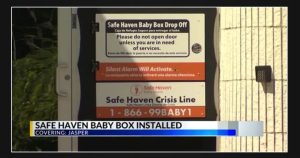A recently published study has revealed that Alabama has made significant progress in child well-being, rising to the 39th spot among all states in the United States. However, an analyst from the organization responsible for conducting the study has pointed out that this improvement was made despite minimal changes in outcomes for children in the state.
The Kids Count data evaluates states based on their economic well-being, education, health, and family and community status.
In terms of education, Alabama ranked the highest with a score of 34. However, the state ranked lowest in family and community, with a score of 45.
According to Apreill Hartsfield, a policy and data analyst for VOICES for Alabama’s Children, although Alabama’s ranking has improved from 45 to 39, there hasn’t been any noticeable change in the outcomes for children in the state.
The Alabama Kids Count Data Book is published by VOICES, a nonprofit organization that receives funding from the Annie E. Casey Foundation. Similar nonprofits exist in all states, working collaboratively to create a comprehensive report for the entire nation.
According to Hartsfield, the increase in child welfare rankings for Alabama does not necessarily indicate that the state has made significant progress. Instead, it suggests that other states have experienced a decline in child welfare, making them worse off than Alabama. While Alabama has managed to maintain its outcomes for children, it has not made any significant strides in improving its child welfare rankings.
Hartsfield emphasized the need to stay vigilant regarding the challenges that are affecting our youngsters.
According to Hartsfield, the area where Alabama performed the worst is in terms of family and community, which indicates that the state is not doing enough to support its vulnerable families.
Why does Alabama struggle to help kids?
According to Hartsfield, accessing services can be a challenge for families residing in rural areas, as a significant portion of the state is comprised of such regions.
Hartsfield acknowledged that there are certain challenges unique to their state that others do not face.
According to a recent study, Alabama children are graduating on-time at a higher rate than many other states. Last year’s numbers reveal that they have better graduation rates than most.
Hartsfield advocates for a thorough examination by lawmakers to identify the necessary improvements that can enhance the quality of life for children in rural areas.
Hartsfield posed a thought-provoking question, “What can we do to enhance the quality of life for our children?”
The improvement of children’s math and reading skills has been the aim of the Numeracy and Literacy Acts through the allocation of funds. The availability of these funds has significantly helped in ensuring that Alabama’s children did not suffer as much learning loss during the pandemic compared to other states.
Hartsfield believes that there is room for improvement when it comes to providing health care for adults in Alabama. Although an impressive 97% of children in the state have health care coverage, the same cannot be said for adults. Therefore, it is crucial to expand access to health care for adults in the state.



